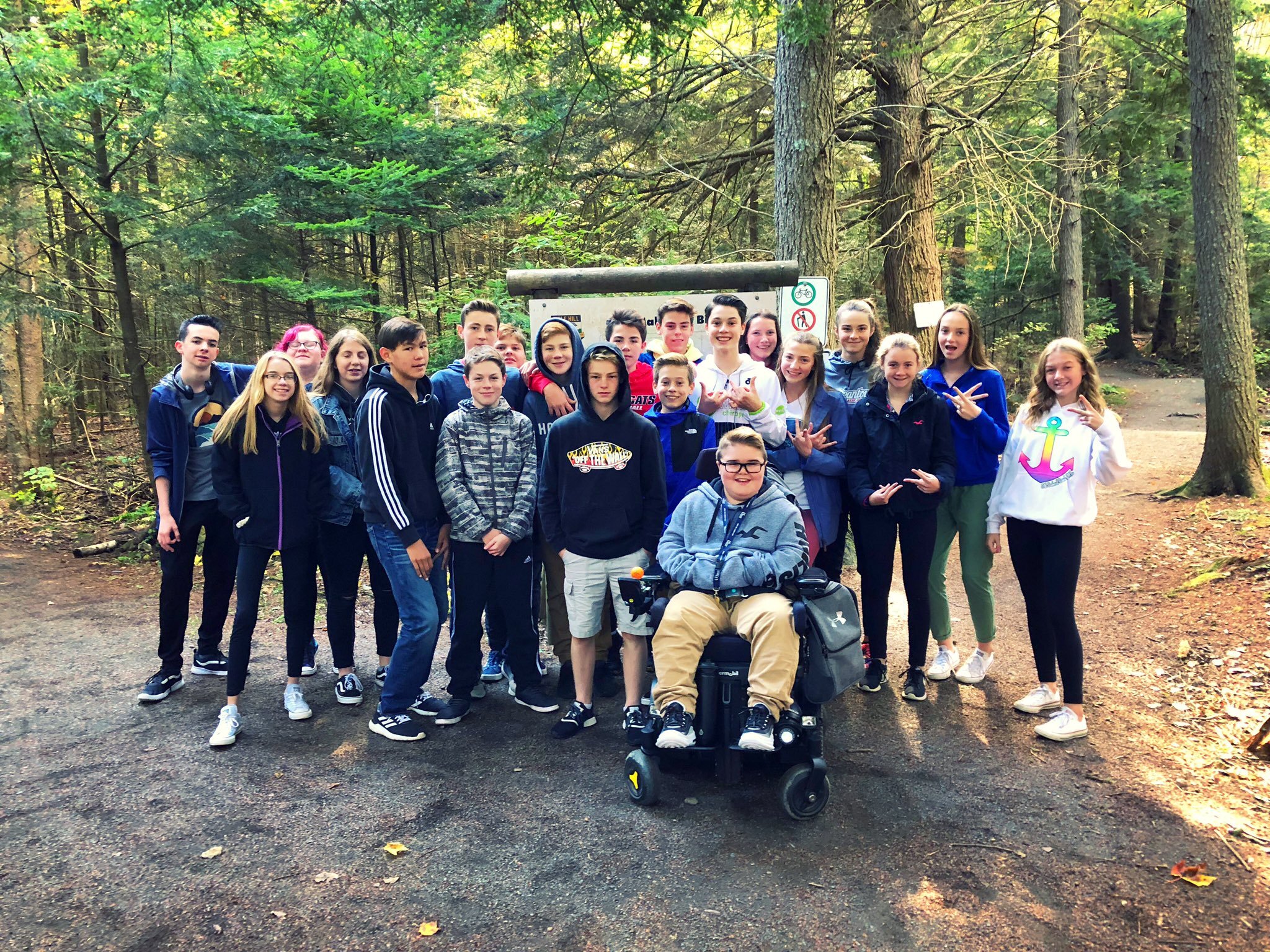Session A:
Introduction & Community Building
Photo Credit: Vikki MacLaughlin
Outcomes
(Knowing (K), Doing (D), Valuing (V))
K: Walking can help me stay healthy and active.
K: Walking is a great way to help the environment.
D: I can play fair with others.
D: I can communicate well with others.
D: I show respect for others.
V: I appreciate the environment and help protect it by walking to and from places.
V: Walking helps me build friendships.
Suggestions for Teaching
As this is the first session of Making Tracks: Pedestrian Safety, it is especially important to establish with the participants how the program will be delivered. You will need to provide them with more detailed information in this session than in other sessions. Parents or caregivers delivering this program to smaller groups or directly to one child may omit this section due to the activities requiring larger numbers of participants.
If you are teaching a group of children and you are not familiar with some, begin by introducing yourself and ask each participant to say their name aloud and one reason why they are excited about taking Making Tracks: Pedestrian Safety.
Provide the participants with a very brief overview of what you will be doing in the session. You could say, “As you know the aim of the Making Tracks: Pedestrian Safety is to encourage you all to be more active and safe pedestrians. So, in our first session today we will get active but there are a few things I need you to know. First, we will talk a little about how important it is to show each other respect when we are working together. Next, I will talk about how I will give you feedback so you learn to be more active and safe pedestrians. Then, we will spend most of our time doing four different activities to help us all get to know one another.”
Briefly talk about your expectations and the importance of respect when working together. Ask the participants what respect means to them. You could provide examples such as listening when others are speaking, not pushing each other inappropriately, etc. Although we commonly use the term ‘walking’, people move around in different ways, some with a cane, others use a wheelchair or mobility device. It is important that all participants feel included and safe to ask questions in a respectful way if they have any concerns for themselves or for their friends.
Next, quickly explain to the participants how they will be assessed (i.e., how you will give feedback to them). The first thing you should say is that every day they will work towards meeting different outcomes and today they are working on meeting these ones:
Walking can help me stay healthy and active.
Walking is a great way to help the environment.
I play fair with others.
I communicate well with others.
I show respect for others.
I appreciate the environment and help protect it by walking to and from places.
Walking helps me build friendships.
Then, tell the participants that you will use verbal (spoken) feedback and written feedback. Tell them that as they do activities you will give verbal feedback by using the words “getting there,” “almost there,” and “there.” Also tell them that these words will help them know if they are meeting the outcomes. Then tell the participants that at the end of each session you will provide written feedback to each of them. This will be in the form of a booklet called a Passport. Show them a copy of what one looks like. Tell them that instead of saying the words “getting there,” “almost there,” and “there,” that in their Passports you will draw parts of or full happy faces. A circle means “getting there,” a circle with two eyes means “almost there,” and a full happy face means “there.”
*If parents or caregivers are teaching a group of children from within a local community, it may be the first time meeting some of the participants. It is important for them to have an opportunity to become comfortable with one another and with you. Focus on creating a fun atmosphere where participants feel secure and safe. Do not worry about getting to content-specific activities or materials yet; now is the time for you all to get to know one another and have fun!

